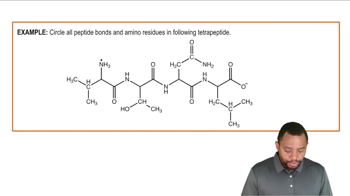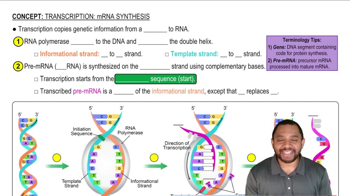What is the one-letter amino acid sequence formed from the following mRNA that codes for a pentapeptide that is an endorphin called Met-enkephalin?
5'AUG|UAC|GGU|GGA|UUU|AUG|UAA3'
 Verified step by step guidance
Verified step by step guidance Verified video answer for a similar problem:
Verified video answer for a similar problem:



 2:42m
2:42mMaster Translation: Protein Synthesis Concept 1 with a bite sized video explanation from Jules
Start learning